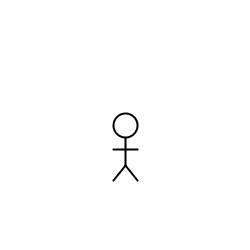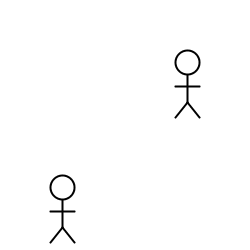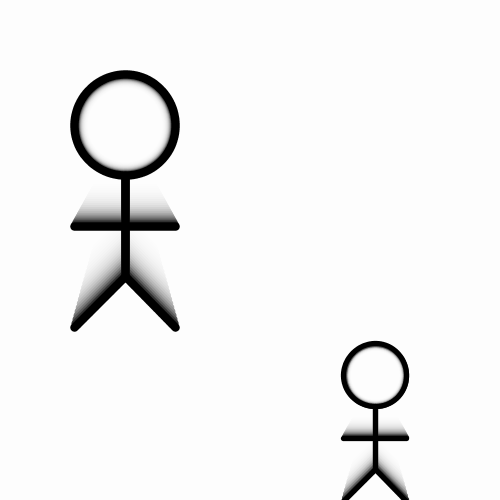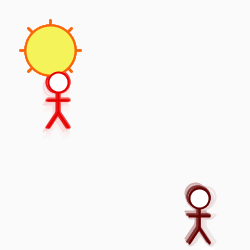|
Modify your previous program so that it animates the two stick
figures using Brownian motion (as shown on the right). You can do this
as follows:
- Add global variables
x1, y1, x2
and y2 to store the current coordinates of each of your
two stick figures;
- Modify
draw() so that it changes the values of
the new global variables by some small amount (e.g., 5 pixels);
When you have this code working, let it run for a while. There
is a good chance that at least one of the figures will wander
“off” the output window. Fix this by constraining each of
your coordinate values to be on the visible output window (using constrain()
as you did last week), but rather than writing the same complicated
constrained, random value computation for each of the four
coordinates, implement and use the following method:
changeCoordinate():
- Receive from the calling program: a coordinate value
value,
a minimum legal value lowerBound and a maximum legal
value upperBound;
- Compute and return a new value that is randomly modified
from
value but constrained by lowerBound
and upperBound.
This method can receive either an x coordinate or a y
coordinate, and returns a new, legal value based on its arguments. For
example, if currentX and currentDiameter
refer to the value of the current x coordinate and the figure’s
diameter respectively, then changeCoordinate(currentX,
currentDiameter/2, WIDTH-currentDiameter/2) will return a new,
properly constrained value for currentX.
Save this program so that you can turn it in later.
|
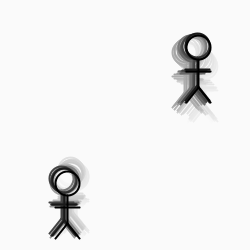 |
